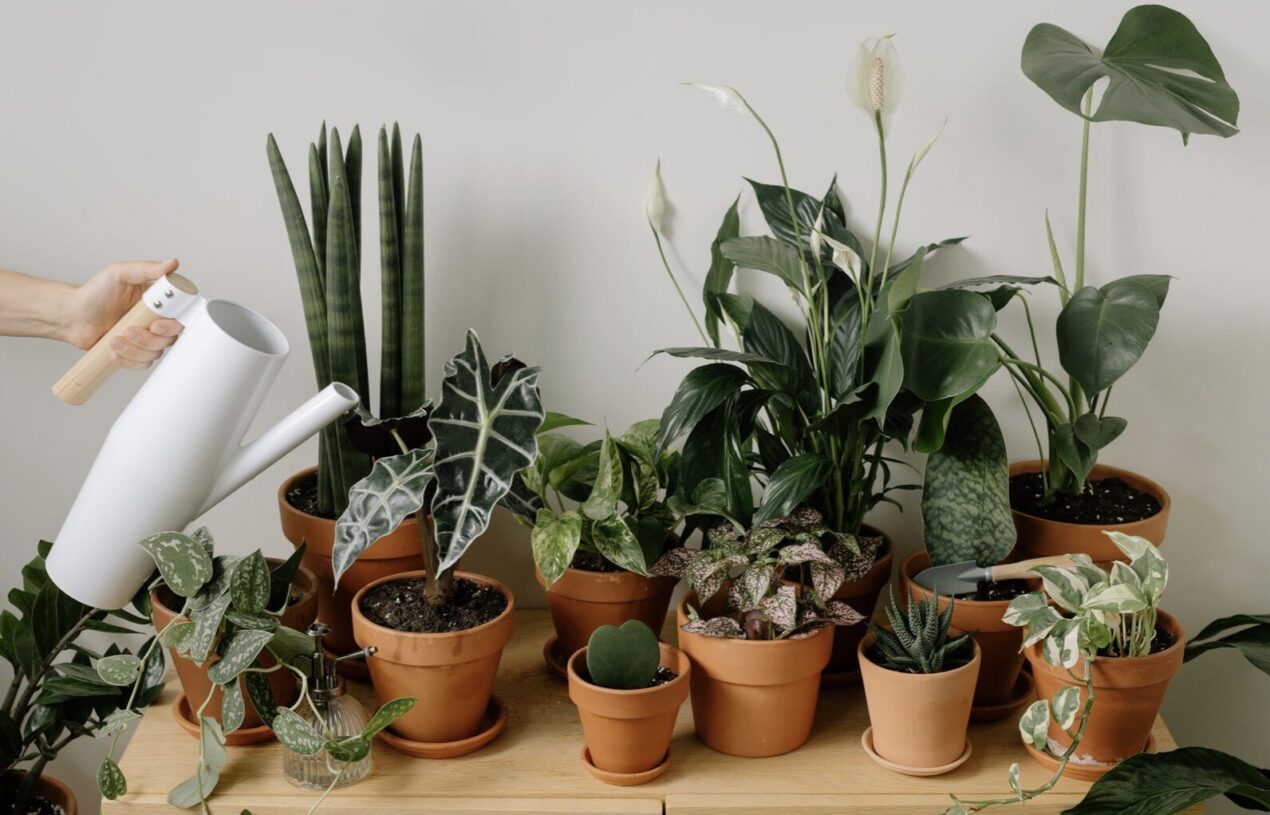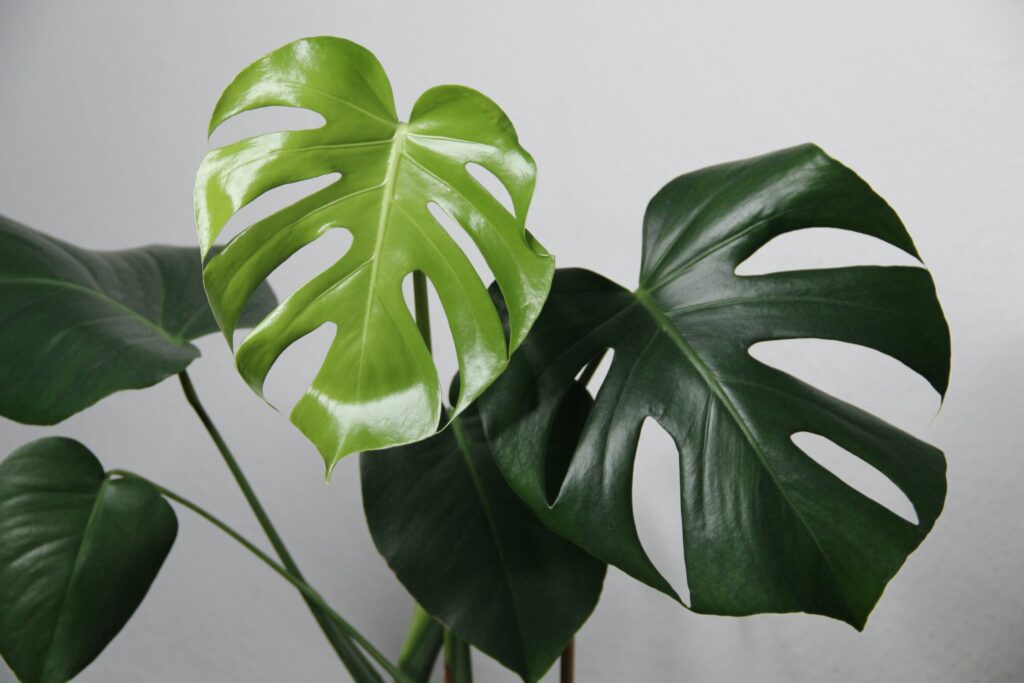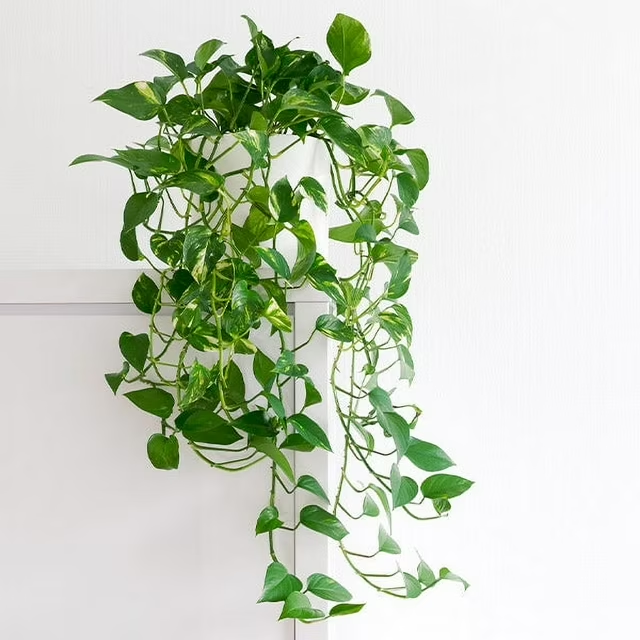I am a plant lady, but not a crazy plant lady. I have more than the average person, but that is because I love nature and like having beautiful living things all around me. I have 5 plants in my room, 5 in my office, and several others in every room of the house. (Okay, so maybe a little crazy for houseplants.) But besides being beautiful and fun to take care of, they can improve your quality of life and even benefit your mental health.
Lower Your Stress
Plants lower stress hormones and reduce your heart rate and blood pressure. Some studies show that the presence of live plants in hospitals improves patient outcomes. Other studies have shown data that workers doing computer tasks with live plants nearby reported less anxiety and stress. There have been debates about whether or not houseplants improve air quality, but current NASA research shows that they do.
Improve Your Mental Health
When a person is suffering from deep depression, therapists frequently recommend that their clients do something to care for others. This is because there is a lot of satisfaction in caring for something and watching how your actions produce positive results. It also helps people focus on something outside of themselves, which can reduce negative thoughts. This can backfire if the plant dies, so this list of plants that are easy to maintain.
Swiss Cheese Plant
The Swiss Cheese Plant (Monstera Deliciosa) is one of my favorite plants. These are one of the easiest low-maintenance plants. They grow very big, beautiful leaves. It is exciting to watch the leaves grow long and unfurl. This is a plant where you see big results from care, and it can brighten your mood every time you see it. They need bright to medium indirect light. I have mine in windows facing South or north, and they thrive. Water every week or two because they do better if they dry out in between waterings.
Aloe Vera
Aloe Vera (Aloe Barbadensis Miller) is extremely easy to grow. It is known for its air-purifying qualities and is a cool desert plant. Even better, aloe is a healing plant, so always have some on hand. Cut a small portion of a shoot, and use the gel inside to instantly treat burns. It also works on cuts, scrapes, and skin irritations. I have many of these plants. They grow fast and big with water, but can also survive drought conditions.
Arrowhead
Arrowhead plants (podophyllum) need bright, indirect light. They grow quickly and have uniquely shaped leaves. Arrowhead plants can tolerate a range of temperatures indoors and can be watered once a week, making them a wonderful low-maintenance choice.
Devil’s Ivy Pathos

Devil’s Ivy Pathos (Epipremnum Aureum) is one of the most common houseplants because there are several varieties, they have pretty heart-shaped leaves, and they grow long, trailing vines. My son has three that have trails over 10 feet long!
Pathos prefer bright indirect light. They can dry out between waterings. NASA research shows that pathos can remove common VOC’s from spacecraft and household indoor air. Volatile organic compounds (VOCs) are chemicals that evaporate into the air and pose health risks and air pollution. VOCs are found in many everyday products, including cleaning supplies, paints, and even some building materials.
Spider Plant
Spider plants (Chlorophytum Comosum) are an easy-going plant. They like bright indirect light and only need water once a week. They are a cool plant that is shown to filter indoor air by absorbing chemicals like formaldehyde, xylene, benzene, and carbon monoxide.
Creeping Fig
Creeping fig (Variegated Ficus Repens) thrives indoors and out because they are quick-growing vines. When planted outside, they overtake walls and can cause significant damage. But as an indoor plant, they are exciting to have because they grow quickly and trail down from their pots. They need light and moist soil, so stay on a weekly watering schedule.
Peperomia
Peperomia (Peperomia obtusifolia) are succulents, which means they are naturally resilient and easy to grow. These plants can look very different from one another, but they have one thing in common: they require minimal maintenance. Here are 33 Types of Peperomia so you can decide which ones you like best.
Snake Plant
Snake plants (Sansevieria) are another favorite of mine, and I have several. Snake plants do great in any type of light. They are known for tolerating low light, but grow more quickly in sunnier areas. These are slow-growing plants that are extremely low-maintenance. Some of mine are already two feet tall, with some varieties getting up to 6 feet. I use my snake plants as decor to fill spaces that need height by placing them in decorative pots on cool plant stands.
Aluminum Plant
Aluminum plants (Pilea Aluminum) get their name from the light parts of the leaves that look like bright aluminum. I don’t have this plant because I live in a desert, and these plants need humid conditions to survive. With regular misting and leaving the top layer of soil damp, you will keep them happy. They also need indirect sunlight.
In Conclusion
Plants are a passion of mine, and caring for them is a welcome part of my routine. They bring me joy when I see them growing bigger, taller, and longer. I get so excited when my houseplants sprout new leaves. Living plants bring a sense of renewal and a connection to nature, which is healing to the soul. They are uplifting, good for reducing stress, and can improve mental health and well-being. Another benefit for people who are suffering from depression is that plants can develop into an enriching hobby that can involve going out to nurseries, joining groups online, and watching how-to videos to learn how to propagate new plants and care for more finicky varieties. Plus, they make every room gorgeous.
I hope you are inspired to try some of these houseplants for yourself or gift them to someone who could use some cheering up.










